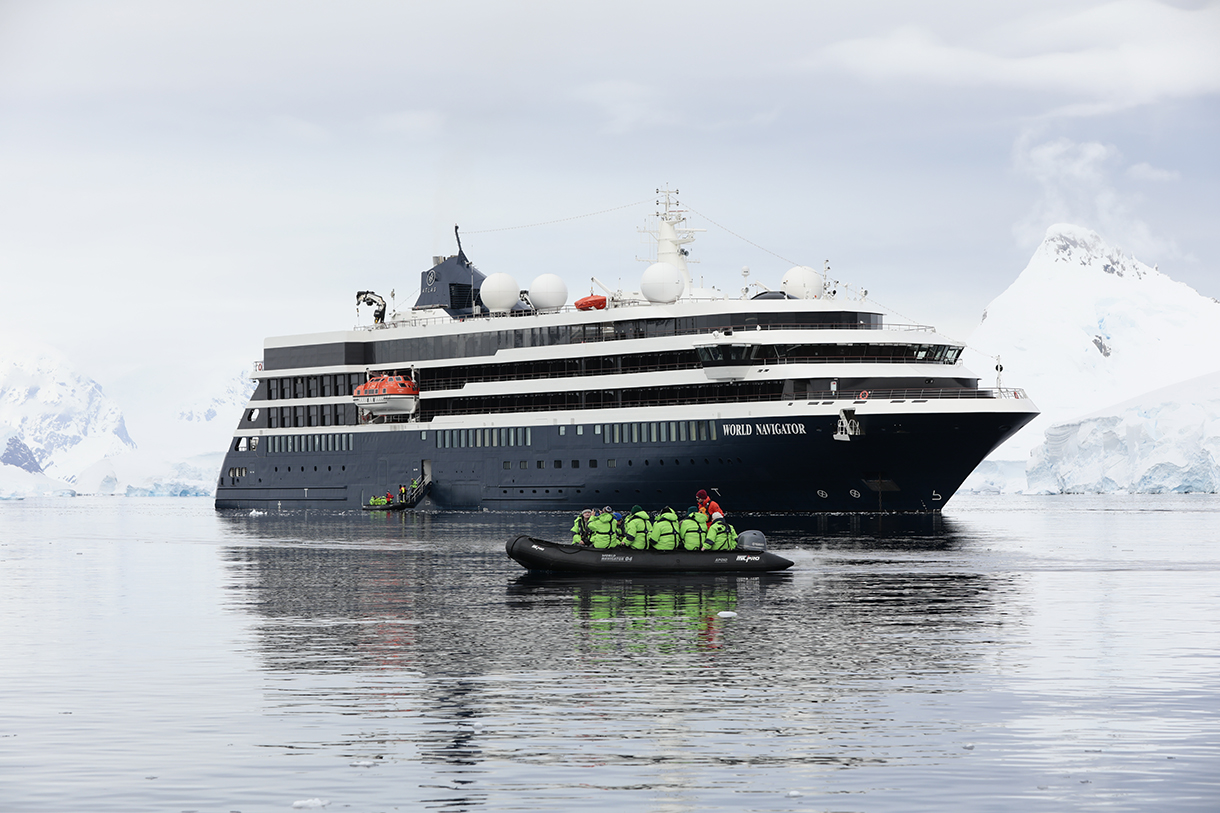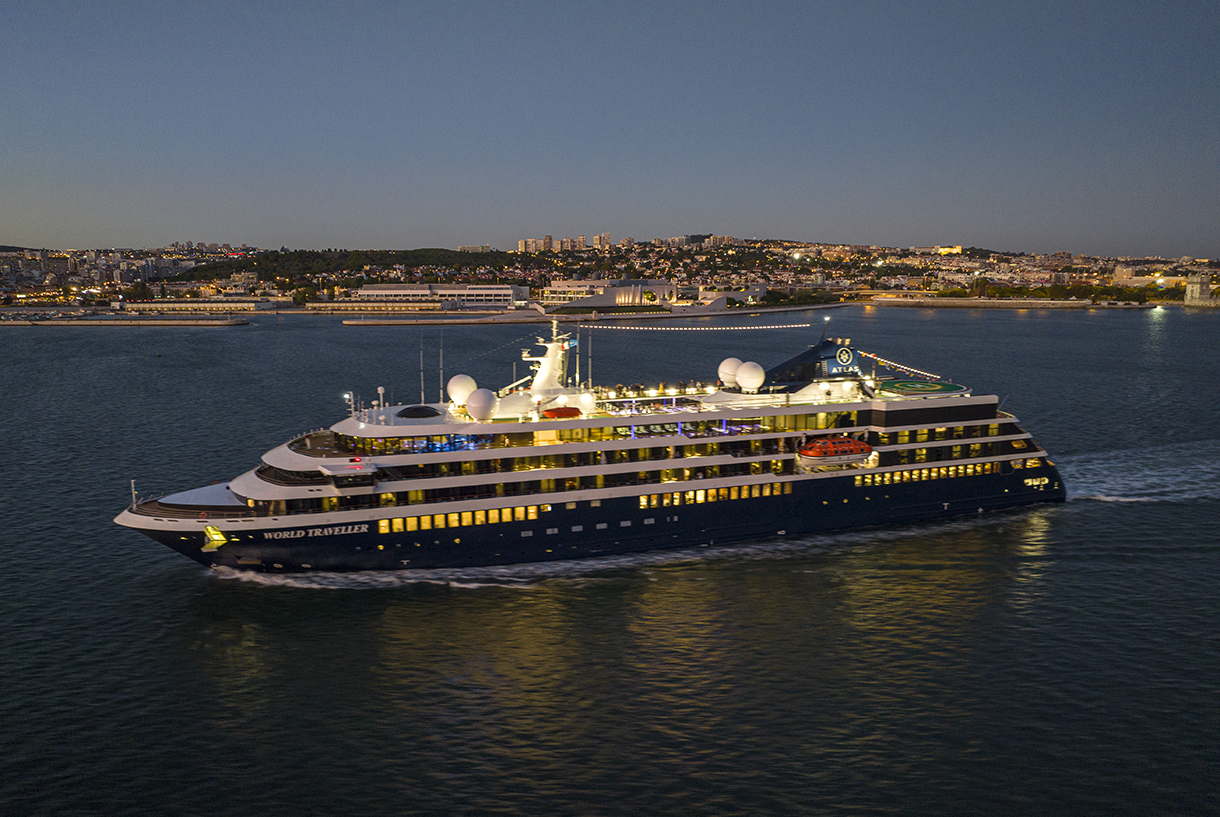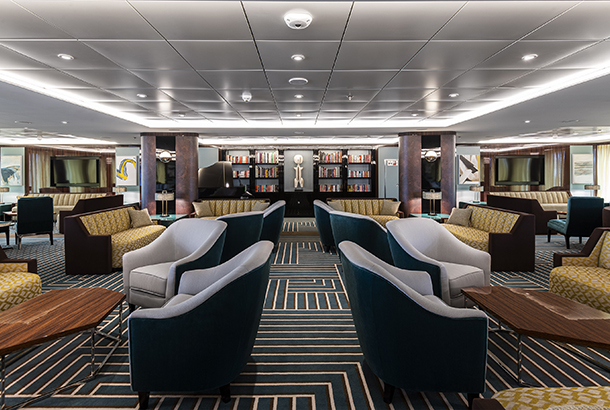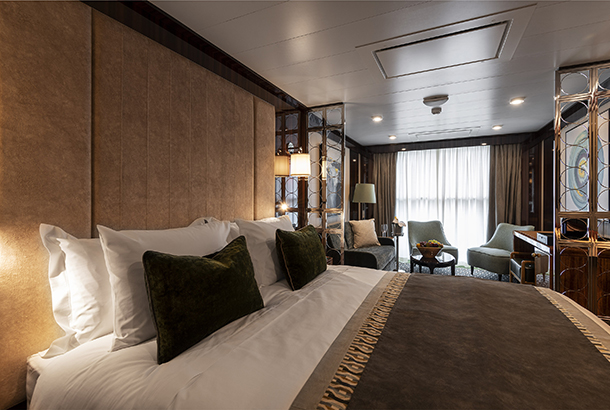
Yacht-style Cruising Puts Atlas Ocean Voyages Ahead of the Big Cruise Ship Lines
By Don Nichols


LUXURY EXPEDITION CRUISE
Launching a luxury expedition cruise brand in a pandemic has its challenges, but Atlas Ocean Voyages — which started sailing its first Polar-Class ship, World Navigator, just a year ago — is laser-focused on beating the odds as it navigates the choppy waters and continues investing big in its growth. This month, the Fort Lauderdale-based start-up will debut its second ship, World Traveller, and it has already started building a third one, World Seeker, with a 2024 launch date. By 2025, it plans to have a fleet of five.
Atlas has been learning from its early missteps as a newbie in a market segment hit hard by COVID and adjusting its operating strategy accordingly. The all-inclusive line is still climbing a hill but it’s making inroads and is now on travel advisers’ radar, especially with a recent big change at the top. “They haven’t had much of an impact at this point in the U.S. marketplace, but James Rodriguez is now with them and he’s great at marketing and has a great fan base within the travel adviser community,” says Anne Scully, a partner in Embark Beyond, a New York-based Virtuoso-affiliated travel agency.
Indeed, Rodriguez just joined Atlas as its new president and CEO in August, bringing valuable start-up experience to the position. The veteran cruise executive spent 19 years at Oceania Cruises, which he helped build from the ground up as a founding member. He says the changes Atlas has been making, some that he was quick to implement himself, are already paying dividends. For example, occupancy has nearly tripled on the company’s Antarctica cruises in just the past two months. He attributes the sales spike to several factors, including having the right offer at the right time, and making sure travel advisers and potential guests understand the line’s value proposition.
“Our guests get a luxury product that equals any of the luxury products out there, but at more of an Upper Premium price,” Rodriguez says, noting the average spend is $700 to $950 per person, per day, compared with $1,100 to $1,500 for expedition cruises operated by high-luxury lines such as Scenic and Silversea.




YACHT-STYLE CRUISING
Originally, the company pitched itself as a “luxury-adventure” line offering exciting and awe-inspiring cruises to less-visited, bucket-list destinations, in particular the Arctic and Antarctica. All that’s still true, but Rodriguez wasted no time shifting the pitch to one he says better defines the product for potential guests: intimate yacht-style cruising.
It’s a pitch that fits. For starters, both ships sport a luxurious, but casual design more in keeping with the yachting life. World Navigator has a steamliner, New York ’40s chic vibe, while World Traveller will have a la dolce vita look, with lots of blues and lighter colors. And the ships, which have just 98 suites and staterooms, sail with less than 200 guests, a number that promotes the kind of coziness and camaraderie you’d expect on a yacht. And a nearly 1:1 guest-to-staff ratio ensures personalized service, as does butler service in all suites. “You get to know your fellow guests, the chefs, the captain, the officers, the lecturers, the naturalists a little bit more than on larger ships,” Rodriguez says, adding that guests can even have a drink and dinner with the expedition team leader at night.
Being yachtlike has other advantages that add to the guest experience. For example, Antarctica only allows 100 persons per landing, and with so few guests on its ships, Atlas can get all its guests onshore in one day and move on. “We don’t have to stay in the same location two days in a row, so we’re able to get more landings and more places on our itineraries than other lines,” he says.
In shoulder seasons, Atlas sails to small, out-of-the-way European ports more associated with yachts than cruise ships — ports like Antibes, France, and Porto Venere, Italy. Originally, the company also scheduled sailings to exotic smaller ports along the West Coasts of both Africa and South America but found them a hard sell with the all-important American market and has nixed them, another key strategical change. More itineraries now mix the boutique ports with traditional Mediterranean ports popular with Americans wanting to reconnect with places they know and enjoy as pandemic travel restrictions are lifted — ports like Athens, Barcelona, London, Monte Carlo and Seville. And, when possible, Atlas dovetails its calls to these marquee ports with crowd-pleasing special events, such as the Monaco Grand Prix and Seville’s wildly popular spring fair, La Feria de Abril. atlasoceanvoyages.com




